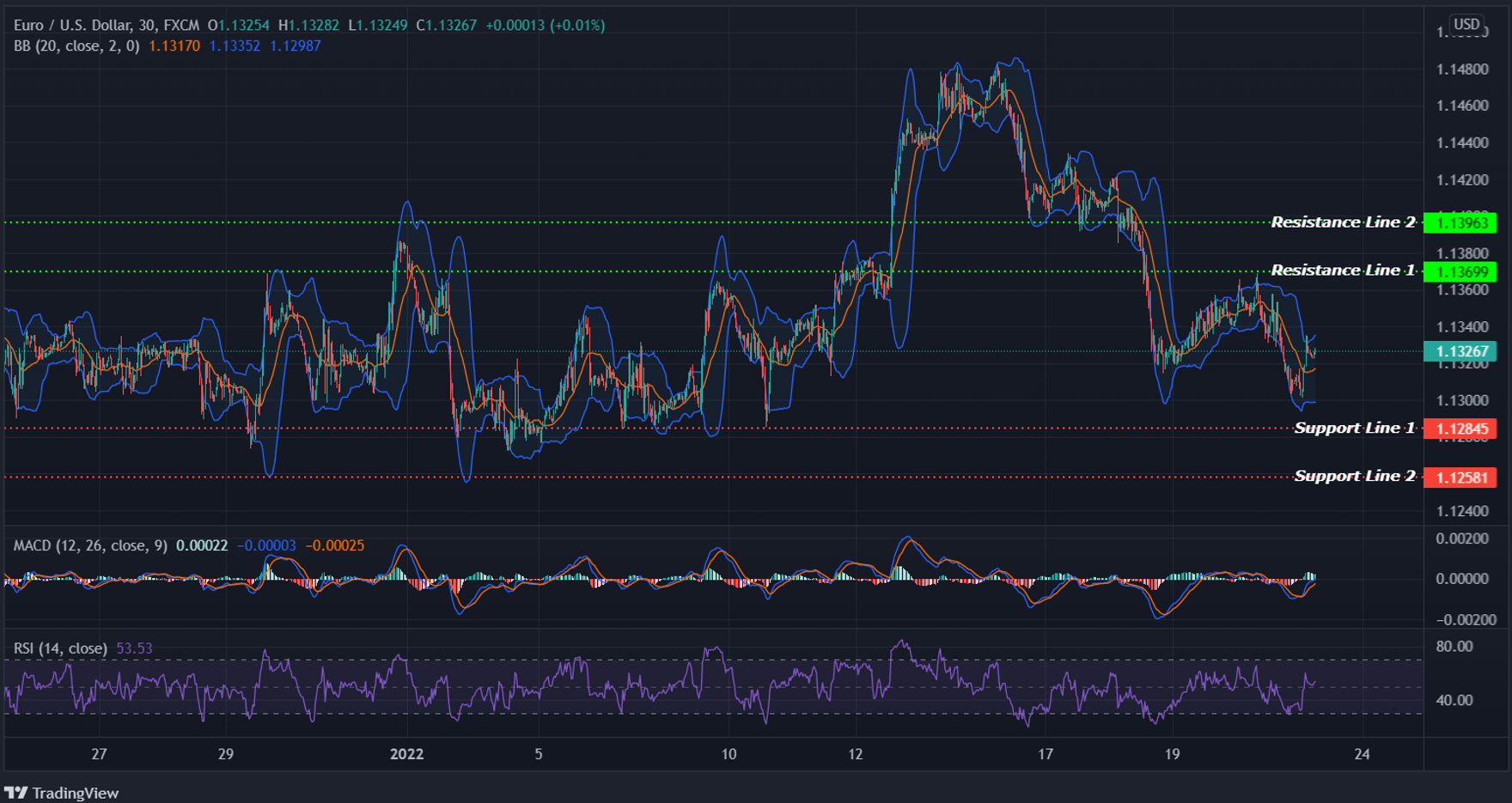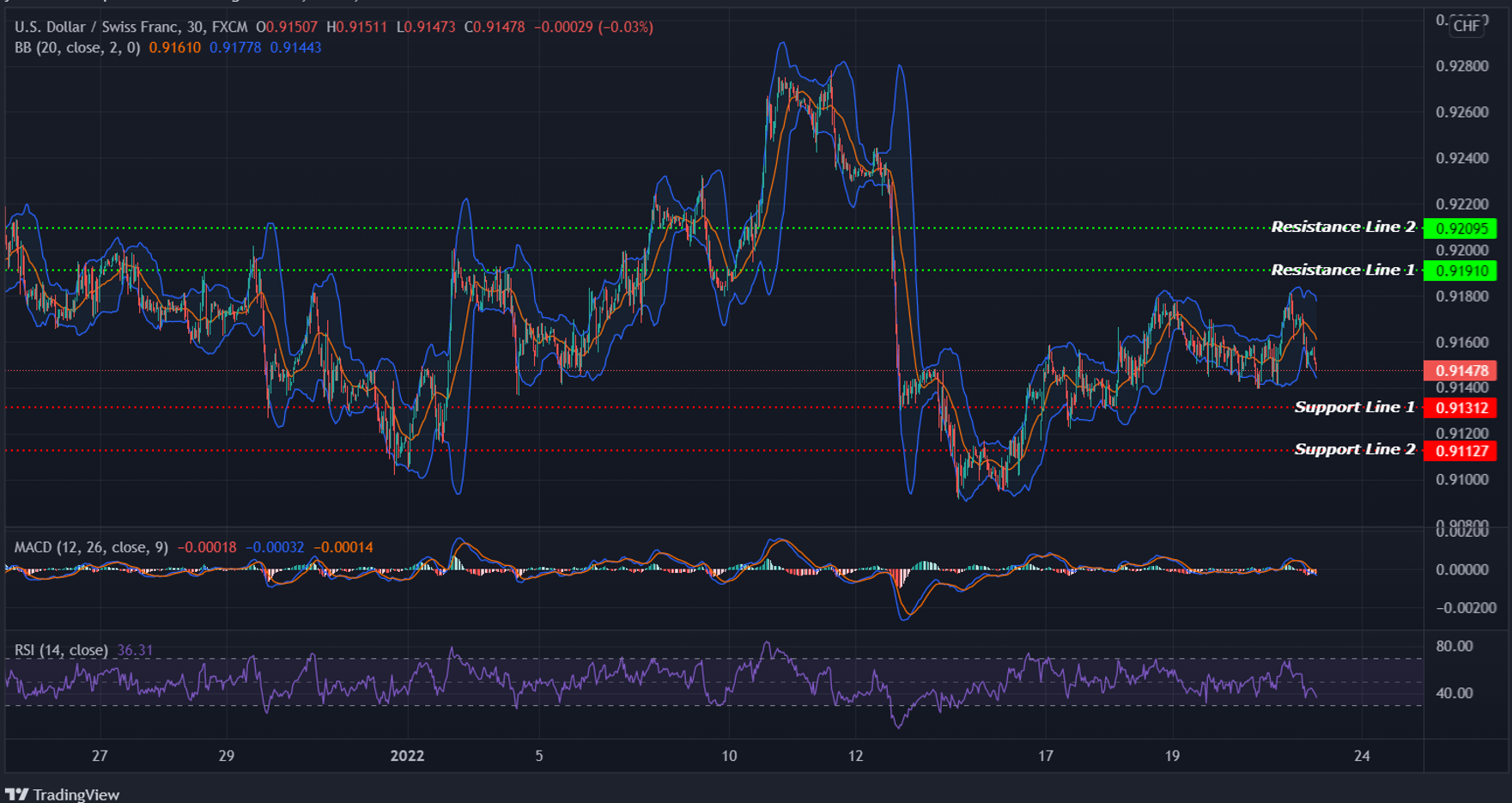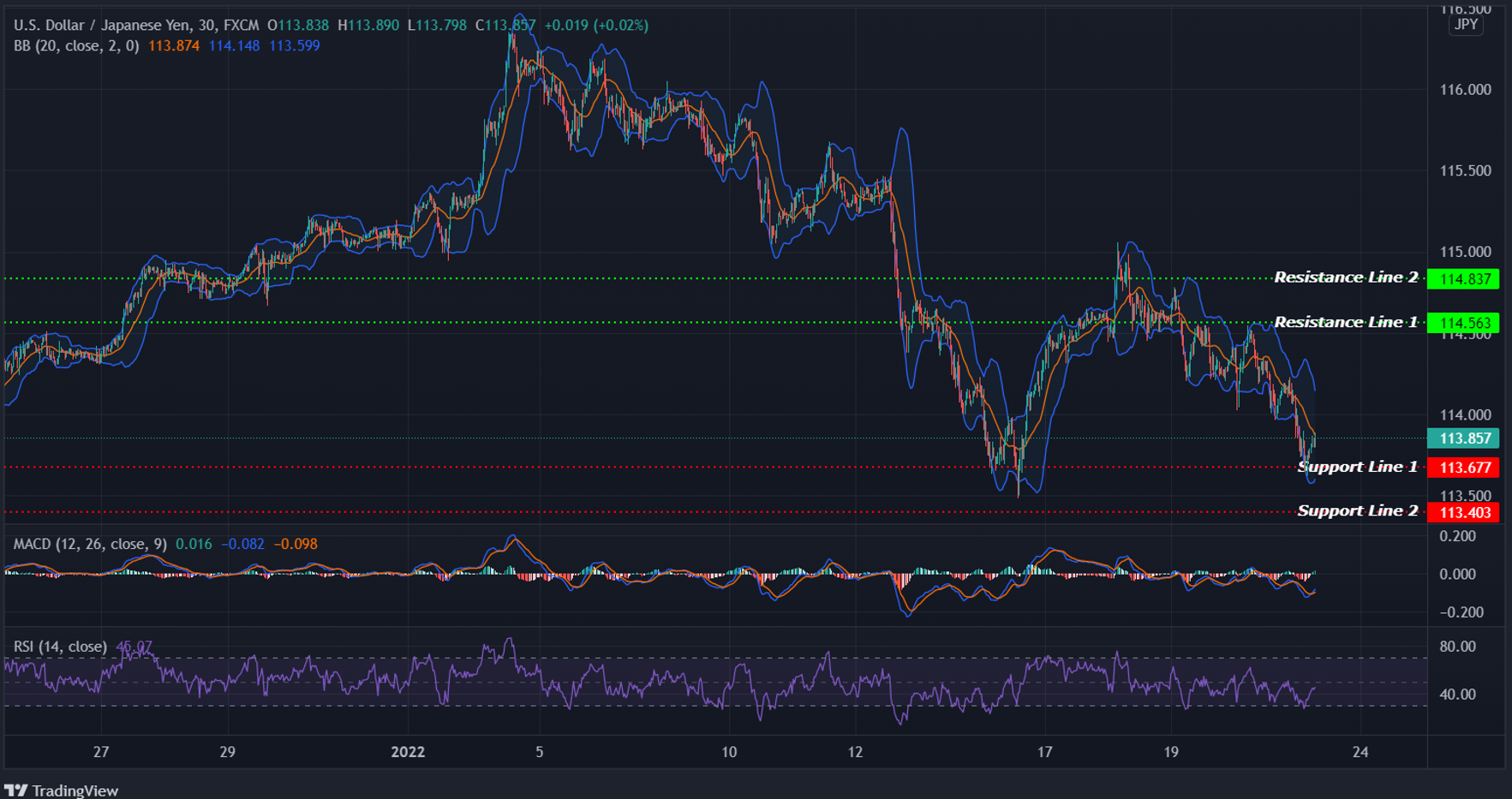INTRADAY TECHNICAL ANALYSIS 21 JANUARY (observation as of 07:10 UTC)
[EURUSD]
Important Levels to Watch for:
- Resistance line of 1.13699 and 1.13963.
- Support line of 1.12845 and 1.12481.
Commentary/ Reason:
The euro continued to edge higher to $1.13267, gradually regaining some ground having touched a 1-week low of $1.13008 earlier today, as the dollar caught a slip in the U.S. Treasury yields. The pair however, is heading for about 0.95% weekly decline.
The U.S. initial jobless claims for the week ended January 7 unexpectedly jumped to 286K, much worse than the 220K expected, while the Philadelphia Fed Manufacturing Survey surged from 15.4 to 23.2 in January, beating expectations. The news put some pressure on the greenback.
The euro meanwhile supported after the ECB head Christine Lagarde said eurozone inflation will decrease gradually over the year, adding that the ECB did not need to act as boldly as the Fed because of a different economic situation. Lagarde also commented on recent trends in euro zone yields as Germany's 10-year Bund that rose above 0% for the first time since 2019, saying the fundamentals of the economy are improving.
The EUR/USD has staged a modest recovery, but the pair could find it difficult to continue to edge higher in the near term. Typically, attempts at this resistance area have resulted in pullbacks in price action. Bullish conviction currently appears insufficient to drive a break. The 1.128 support line will likely be the next test for the pair. Momentum indicators have downward trajectories, with MACD approaching the zero line.

[USDCHF]
Important Levels to Watch for:
- Resistance line of 0.91910 and 0.92095.
- Support line of 0.91312 and 0.91127.
Commentary/ Reason:
The dollar slipped 0.26% against the Swiss franc on Friday, trading at 0.91478 franc, though still heading for around 0.33% weekly gains.
While the dollar was supported from higher T-note yields in early of the week, the moves in the stocks market unsettled equity investors, underpinning the Swiss franc as a safe-haven currency.
Should the price extend its declines, the 0.913 level could be a turning point for the bearish move. Below that, the focus would shift to 0.911 where the price posted a rebound early in the year. On the other hand, a recovery could retest the 0.919 barrier. Moving higher, the 0.920 area may halt the bullish actions.

[USDJPY]
Important Levels to Watch for Today:
- Resistance line of 114.563 and 114.837
- Support line of 113.677 and 113.403
Commentary/ Reason:
The greenback continues to lose ground on the safe haven yen, falling to a one-week low early on today and last traded at 113.578 per dollar, though still holds slight weekly gains against the yen.
USD/JPY posted moderate losses after lower T-note yield strengthened the yen. Signs of strength in Japan’s economy were also bullish for the yen after Japan Dec exports rose +17.5% y/y, stronger than expectations.
Japan's core CPI however rose 0.5% y/y, increasing for a second month in a row at the fastest pace in nearly two years in a sign of broadening inflationary pressure from rising fuel and raw material costs. Still, the increase is not likely to trigger an immediate withdrawal of monetary stimulus by the BoJ, with inflation still well below its 2% target and driven mostly by external factors rather than strong domestic demand.
Intraday bias in USD/JPY stays mildly on the downside for the moment, for 113.677 support. On the upside, the resistance of 114.56 can keep prices from rising. If it breaks through, prices may soar to 114.83.

[GBPUSD]
Important Levels to Watch for:
- Resistance line of 1.36622 and 1.36920.
- Support line of 1.35658 and 1.35360.
Commentary/ Reason:
Sterling was slightly lower against the dollar, was last at $1.35864, down 0.56% on the week, hovering near its lowest since Jan. 11, but still up about 0.70% this month.
The pound slid on Friday amid rekindled fears of heated inflation and aggressive Federal Reserve policy tightening.
The dollar took a breather from recent gains as a rally in U.S. Treasury yields stalled but was still headed for its weekly gains ahead of a Federal Reserve policy meeting next week.
The British pound held its support after Britain’s inflation rate on Wednesday surged unexpectedly to the highest since 1992.The strength of inflation is fanning speculation of a rapid cycle of tightening for monetary policy.
Investors kept monitoring signs of a slowing economic recovery, mounting inflationary pressure, record rises in COVID-19 cases and post-Brexit tensions over the Northern Ireland protocol. A talk of a leadership challenge to Prime Minister Boris Johnson also added to uncertainty.
The GBP/USD pair managed to break 1.366 and hold below it again, to support the continuation of the expected bearish trend scenario for the upcoming period, and the way is open to visit 1.3565-36 as a next negative target.















